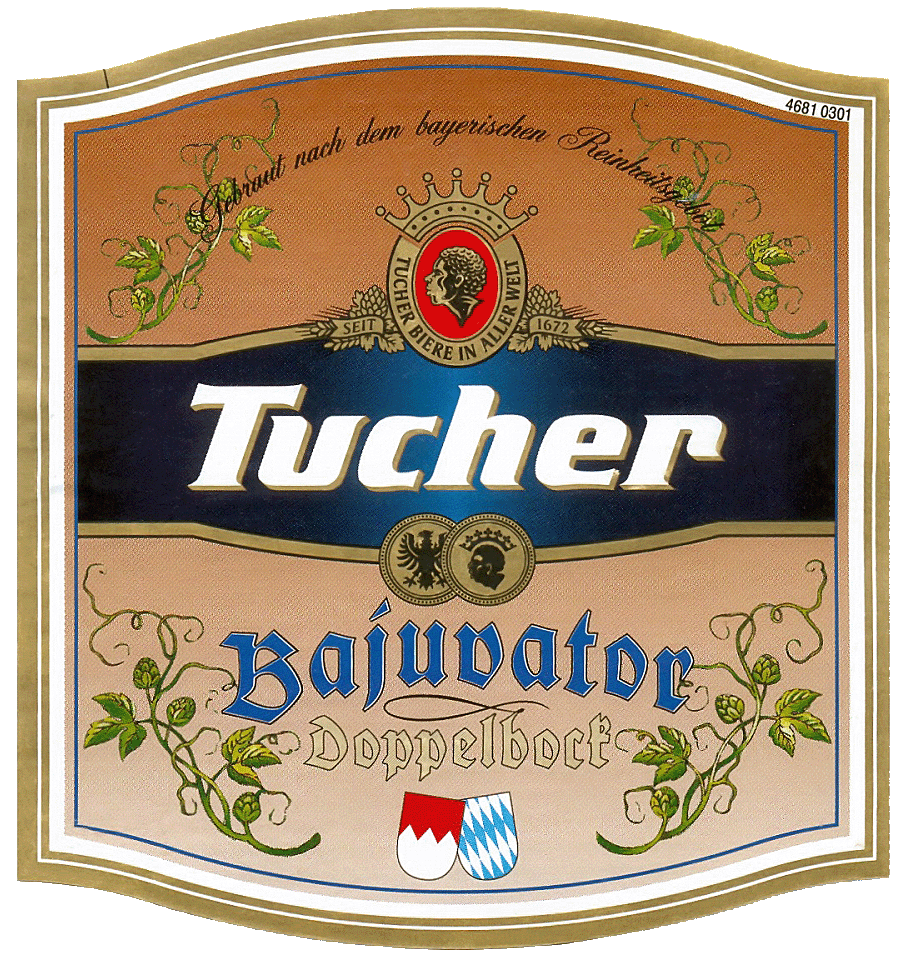

Tucher Bajuvator





Review Date 12/18/2006 By John Staradumsky
Bock is back. Specifically, Tucher Bajuvator (Buy-you-fay-tore)
Doppelbock. Some fifteen years ago, I sampled this beer for the first time
after sauntering into The Meat and Wursthaus Deli in Norwood, Massachusetts.
This place was a delight for any German-o-phile like myself, loads of
imported German foods, fresh-in-store made sausages (including the best
bratwurst Iíve ever eaten), German music tapes and CDs, beer glasses,
steins, and of course plenty of German beer. And it was here I fell in love
with the stuff.
Bajuvator ranks among the finest German doppelbocks in my opinion, right up
there with Salvator, Optimator, and Maximator. For some reason it
disappeared from American shelves for many years, though Tucherís excellent
wheat beers have been readily available right along. But back in 2001 or so
I started to see it again, and so of course I stocked up on it-and now,
youíll find it quite frequently in my beer fridge, should you happen to look
there. And why not? At $2.29 for a half liter bottle, this is one of the
best bargains going. Here, let me show you why.
Tucher Bajuvator Doppelbock pours to a deep amber-brown color with a
light head formation and a sweet malty nose. The palate is big and chewy,
packed with notes of chocolate, molasses, and hints of roasty espresso and
toasty-nutty melanoidins. This is really a big malted-milk of a beer, and it
might remind you of that with its rich sweetness.
The finish is lightly sticky-sweet and a tad warming with alcohol (content
by volume 7.2%). Thereís a bit of grassy herbal hops, too, but just a bit.
The malts are intended to be the star attractions here, after all.
OK, back up a little you say. What are those melanoidins you were talking
about? Theyíre a unique flavor compound that is found in beers that are
brewed using the decoction method of mashing malted barley, an essential
step in the process of brewing beer. Mashing converts starches in barley
malt to sugars through heating. The sugars are important because they are
later consumed by yeast during the fermentation process, and converted into
alcohol and carbon dioxide.
There are two methods of mashing malt, the aforementioned decoction, and
also infusion, the more common method. Infusion involves the direct
application of heat to the mashing vessel, generally called the mash tun.
This is a process that has been promoted by English brewers for ages.
Decoction, on the other hand, is more common in Germany, and it does indeed
impart a unique character to beer. In a decoction mash, a small portion of
the mash is removed from the mash tun and heated to a very high temperature,
then returned to the tun to heat the contents. The benefit here is that the
malt sugars in the super-heated component are caramelized and produce those
tasty melanoidins. In doing so, they give us wonderful beers like Tucher
Bajuvator.
But donít take my word for how good this beer is. Try it for yourself, and
youíll see just what I mean. Bock is back, and itís here to stay.


Glad I tried it?
T
Would I rebuy it??
*Pricing data accurate at time of review or latest update. For reference only, based on actual price paid by reviewer.
(B)=Bottled, Canned
(D)=Draft